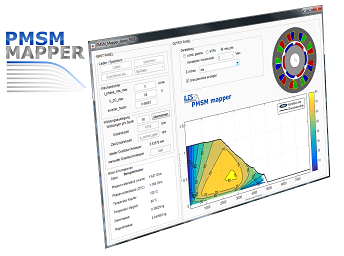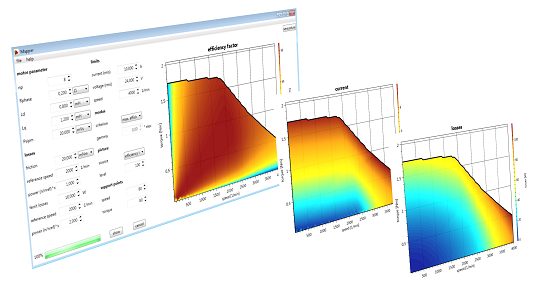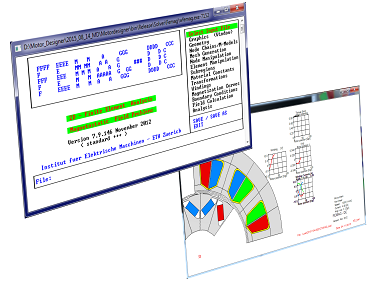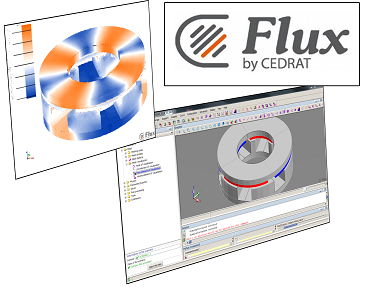tools
own development
pre/post processor

The programm MD is an own development. It comprises a parameterized geometry input and a continuously updating preview of the motor. Different stator and rotor topologies are available. The selected and designed motor can be computed by different FEM solvers (e.g. FEMAG-2D, Flux-2D). MD starts the solver with the required script. The program builds the motor model and computes the motor depending on the selected computation type (e.g. cogging torque, load torque, BEMF,...). Once the FEM solver is finished, MD reads the result and shows it in the gui. detail
map generator

The PMSM Mapper is as well an in-house development. It generates different characteristic maps based on results of FEM simulations. The basics behind the program is a dq model of a pmsm. The torque speed diagram can be created depending on different criteria, e.g. minimum current, maximum efficiency factor or constant advance angle. The optimum number of turns can be defined by the limits of the inverter. The maximum current and the maximum voltage are limits caused by the power electronics. detail

The DQ mapper is a free program (download) provided by our company. It generates torque speed maps based on the dq model. The mapper considers two speed-dependent characteristics (friction and iron losses). Additionally, limits for maximum terminal voltage and the maximum current from the inverter can be set. The generated maps can be save as images. For questions, suggestions or errors please contact us.
losses model

In the process of designing of a motor it is necessary to compute the iron losses. Different models exist to estimate the iron losses based on fem results. (e.g. Jordan, Bertotti or Steinmetz). For the determination of the coefficients used by the loss model our company developed a software which is provided free of charge . This program computes the model coefficients based on measured loss characteristics.
third party software
finite element programm 2D/3D

FEMAG is a program designed for the computation of electromagnetic fields that are either static in 2d or changing over time in a sinusoidal fashion.
It can as well be used for the simulation and analysis of electric machines. The program was developed at the department for electric machines at the ETH
Zürich between 1982 and 1997. It is continuously adapted depending on user requirements.
link to homepage

FLUX features a large number of functionalities, including extended multi-parametric analysis, advanced electrical circuit coupling and kinematic coupling.
It is suitable for static, harmonic and transient analysis. Flux is suitable for designing, analyzing and optimizing a variety of devices and applications such
as rotating machines, linear actuators, electromagnetic compatibility, transformers, etc.
link to homepage
system simulation Matlab/Simulink

MATLAB is the high-level language and interactive environment used by millions of engineers and scientists worldwide. It lets you explore and visualize ideas and collaborate across disciplines including signal and image processing, communications, control systems, and computational finance. link to homepage
Simulink is a block diagram environment for multidomain simulation and Model-Based Design. It supports simulation, automatic code generation, and continuous test and verification of embedded systems. Simulink provides a graphical editor, customizable block libraries, and solvers for modeling and simulating dynamic systems. It is integrated with MATLAB, enabling you to incorporate MATLAB algorithms into models and export simulation results to MATLAB for further analysis. link to homepage
